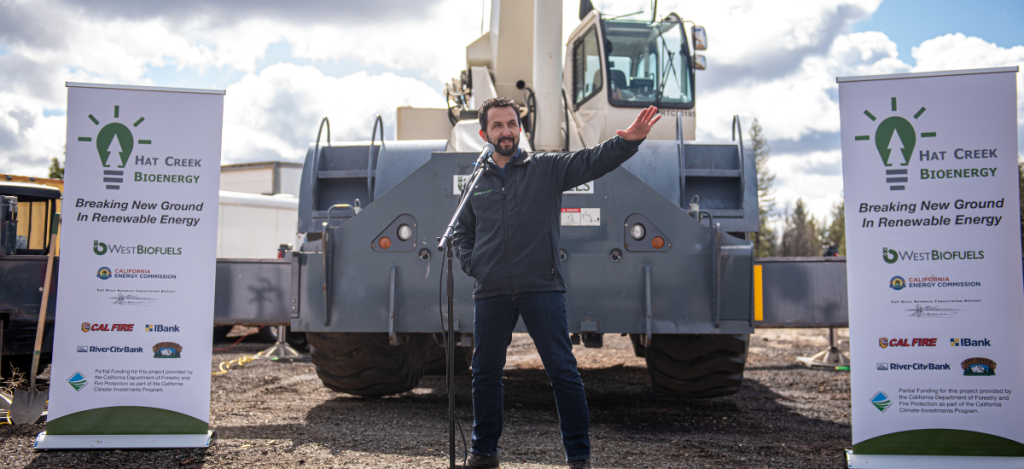Empowering Voices: The Crucial Role of Trauma-Informed Communications in Survivor Storytelling

As communications and marketing professionals, we can amplify voices, shape narratives, and drive social change. But with that power comes a profound responsibility—especially when working with trauma survivors. By adopting trauma-informed approaches, we can ensure our storytelling empowers rather than exploits and heals rather than harms. Why Trauma-Informed Communications Matter Trauma is pervasive in our society. Studies show that 70% of U.S. adults have experienced at least one traumatic event. For many, sharing their story can lead to healing and positive change. However, if done carelessly, it risks re-traumatization. Traditional journalistic approaches often prioritize getting “the scoop” over survivor well-being. As communicators, we must hold ourselves to a higher standard. Trauma-informed communications shift the paradigm from “What’s wrong with you?” to “What happened to you?” and then to “What’s strong with you?” It views survivors as whole people deserving of dignity, not just sources for dramatic quotes. This approach leads to more accurate, nuanced storytelling. Trauma impacts memory and perception. By creating safe, supportive environments for survivors to share at their own pace, we get fuller, more reliable accounts without causing further harm. Concrete Steps for Trauma-Informed Storytelling Prioritize Informed Consent: Clearly explain how you’ll use their story, what questions you’ll ask, and their rights in the process. Give them time to consider before agreeing. Collaborate, Don’t Dictate: Share questions in advance. Let survivors choose what they’re comfortable answering. Allow them to review and approve their quotes. Create a Safe Environment: Let them choose the interview location. Explain the logistics in advance (duration, recording methods, etc.). Offer breaks. Ask Open-Ended Questions: Instead of “How do you feel?”, try “How are you today?” or “How did you experience that?” Respect Boundaries: Don’t pressure them if they decline or seem hesitant. Provide your contact info in case they change their mind later. Focus on Strength and Resilience: While acknowledging pain, highlight growth, coping strategies, and hopes for the future. Give Them Control: Ask what they hope to achieve by sharing their story. Shape your piece around their goals. Avoid Sensationalism: Avoid unnecessary graphic details that could trigger readers or the survivor upon publication. Follow-up: Stay in touch about how their story is used. If you plan future coverage, always inform them first. Care for Yourself: Secondary trauma is real for communicators, too. Practice self-care and seek support when needed. Embracing trauma-informed communications requires a shift in mindset throughout our organization: Educate all staff on trauma basics and its impacts on memory, behavior, and healing. Develop clear policies on ethical storytelling and survivor interactions. Prioritize long-term relationships with survivors over “one and done” stories. Measure success beyond clicks and views. Consider how our work impacts survivors and communities. Create space for reflection and learning. Debrief challenging stories as a team. The Impact of Trauma-Informed Storytelling When we approach survivor stories with empathy, respect, and collaboration, remarkable things happen: Survivors feel empowered, not exploited. Our stories become richer, more nuanced, and ultimately more impactful. We build trust with vulnerable communities, opening doors for future partnerships. Our work actively contributes to healing, both for individuals and society. By embracing trauma-informed practices, we don’t just avoid harm—we become agents of positive change. We shift from merely telling stories to facilitating healing and transformation. This requires more time, care, and intention, but the impact is immeasurable. Ready to get started? Contact us today—Call 855-MKTNGCO or click here!! GO DEEPER: Trauma-Informed Journalism (CTIPP) Survivor Storytelling (National Survivor Network) Whose story, whose benefit? Returning (to) the power of authentic narrative (University of Liverpool) The Power of Trauma-Informed Communications & Marketing: Why CEOs Must Embrace This Approach (MKTNG) Integrating Trauma-Informed Principles Into Your Internal Communications & Workplace Culture (MKTNG) (AI Disclaimer: proofed by Grammarly and lightly edited using Claude)
Building Trust: The Essential Role of Proactive Communication in Construction and Infrastructure

In construction, infrastructure, and development, success isn’t just about blueprints and bulldozers. It’s about building something equally important: trust and goodwill within the communities where projects take shape. Forward-thinking companies are recognizing that proactive communication and community engagement aren’t just nice-to-have extras—they’re essential strategies for ethical business practices and long-term success. Let’s face it: construction projects impact communities. They bring noise, traffic disruptions, and changes to familiar landscapes. These impacts can quickly lead to frustration, opposition, and costly delays without proper communication. However, companies can turn potential adversaries into allies by getting ahead of potential issues through proactive outreach and engagement. Imagine this scenario: You’re about to break ground on a major development. Instead of waiting for the inevitable questions and concerns to bubble up, you reach out to the community early. You host informal meet-and-greets, set up an informative project website, and actively seek input from local residents. Perhaps you even start investing in the community’s nonprofits and initiatives that reflect your company’s culture to build relationships and good stewardship. By the time construction starts, you’ve already built a foundation of trust and understanding. This approach isn’t just about being a good neighbor (though that’s vitally important too). It’s a smart business strategy with real, tangible benefits. When you engage proactively, you’re not just managing your reputation but actively shaping it. You’re demonstrating transparency, showcasing your commitment to responsible development, and building a positive brand image that extends far beyond any single project. Think of effective communication as a form of insurance. It helps mitigate risks like project delays, negative media coverage, and difficulty securing approvals for future projects. When communities understand and support your work, you’re likely to encounter smoother permitting processes, fewer complaints during construction, and increased cooperation from local stakeholders. All of this translates to improved operational efficiency and a healthier bottom line. But how do you put this into practice? Start by reaching out early – well before breaking ground. Use a mix of communication channels to reach diverse audiences. This might include traditional town halls and printed materials but don’t neglect digital platforms like social media and project-specific websites. The key is to maintain consistent communication throughout the project lifecycle. Remember, effective communication is a two-way street. Create opportunities for genuine dialogue and show how community input influences your decisions. Be upfront about challenges—acknowledge potential negative impacts and clearly explain your mitigation efforts. At the same time, don’t shy away from highlighting the benefits your project will bring, whether it’s job creation, infrastructure improvements, or other positive community impacts. It’s also crucial to ensure your entire team is on board. Every employee who interacts with the public should be well-versed in your communication strategy and company values. Consider partnering with local organizations to build trust and amplify your positive impact. These collaborations can open doors and create goodwill that lasts long after a project is completed. Every interaction is an opportunity to demonstrate your commitment to responsible development. When done right, proactive communication can transform potential adversaries into allies, creating a smoother path for your current project and a brighter future for your entire organization. So, the next time you plan a project, remember that your most important blueprint might be your communication strategy. By prioritizing open, honest, and proactive engagement, you’ll not only be a good community steward but also set your company up for sustainable success in an increasingly connected world. Ready to get started? Contact us today—Call 855-MKTNGCO or click here!! (AI Disclaimer: proofed by Grammarly and lightly edited using Claude)
Building Your Content Machine: 9 Tips for Success

In today’s digital landscape, creating compelling content isn’t just about writing well—it’s about building a robust content machine that consistently delivers value to your audience. Whether you’re a seasoned marketer or a budding entrepreneur, mastering the art of content creation and distribution can significantly boost your online presence and engagement. This post explores nine essential tips to help you construct a powerful content strategy that resonates with your audience and drives results. Gather Emails: Bake a “subscribe” button into every webpage, blog post, scripts, and newsletter to build your audience (and, thus, impact and reach). Consider scheduling bi-weekly social media posts exclusively promoting this call to action. Know Your Audience: Don’t just guess—use AI research tools, surveys, analytics, and good old-fashioned conversations to understand your audience’s wants and needs. Consistency is Key: Set a realistic publishing schedule and stick to it. It’s better to underpromise and overdeliver. Diversify Your Content: Mix it up with different formats and topics to keep things fresh. Encourage Engagement: Make it easy for your audience to comment, share, and interact with your content. Measure & Adapt: Use analytics to understand what’s working and what’s not. Be bold and pivot. Collaborate & Cross-Pollinate: Invite guest contributors and seek opportunities to contribute to other platforms. Stay True to Your Voice: Authenticity cuts through the noise. Don’t try to be something you’re not. Cast a Wide Net: Amplify your message by forwarding and sharing blogs, videos, and podcasts to relevant media, podcasts, and stakeholders. Implementing these nine strategies will transform your content creation process from sporadic efforts into a well-oiled machine. Remember, building a successful content strategy is an ongoing journey that requires patience, persistence, and adaptability. By focusing on audience growth, understanding your readers, maintaining consistency, and staying true to your authentic voice, you’ll create a content ecosystem that attracts, retains, and engages your target audience. Are you ready to ramp up your content creation and audience engagement? Contact us today—Call 855-MKTNGCO or click here! GO DEEPER: The Media Landscape: A Crowded Party Controlling the Narrative Around Your Brand – It Begins at Home, on Your Website The Content Ecosystem: From Blog to Inbox to Feed (AI Disclaimer: proofed by Grammarly and lightly edited using Claude)
The Content Ecosystem: From Blog to Inbox to Feed

Now, let’s talk about turning your website into a content powerhouse. Picture this: a monthly newsletter that’s actually anticipated, not immediately relegated to the spam folder. Social media posts that spark conversations, not eye-rolls. Videos that people share voluntarily, not just to win a contest. And podcasts that make commutes fly by. Start with Blogs: This is your content home base. Aim for a mix of timely posts and evergreen content that showcases your expertise. Think of your blog as the foundation of your content pyramid—everything else will build from here. Don’t be afraid to dive deep into topics that matter to your audience. Remember, you’re not just sharing information; you’re building trust and establishing authority in your field. Craft a Must-Read Newsletter: Distill your best content into a monthly digest. Add thought-leadership reflections and insights to make subscribers feel like insiders. Your newsletter is your direct line to your audience’s inbox – make it count. Consider including exclusive content or early access to new resources to give subscribers a real reason to open that email. NOTE: Your newsletter is a portal to your media. It is not a long slog of content. Instead, use images or teasers linked to your website and/or social media where you can leverage traffic or create opportunities for engagement. Expand Your Story-Telling: People crave authenticity, so peel back the curtain and let your targeted audiences peek behind the scenes. Profile staff, volunteers, leadership, and even clients—whoever are the beating hearts of your organization. Remember, folks are less interested in slick product pitches and more keen on understanding the values and mission driving your work. Share your origin story, showcase a day in your team’s life, or offer thought leadership that positions you as an industry trailblazer. When you open up, it humanizes your brand and builds trust. Share the struggles, the triumphs, and the everyday moments that make your organization tick. It’s not just story-telling; it’s building lasting engagement and brand loyalty. Create Social Media Magic: Don’t just copy-paste your blog posts. Adapt content for each platform. On LinkedIn, you might share a detailed case study, while on Twitter, you’re distilling complex ideas into bite-sized wisdom. And Instagram? That’s where you show the human side of your brand. Mix it up, keep it fresh, and always, always engage with your followers in the comments section. The companies have gamified engagement, and the rules are constantly changing, so stay on top of the best tactics to hack the algorithm. Lights, Camera, Action: Video content doesn’t have to mean a Hollywood production. Start simple with subject matter expert interviews or behind-the-scenes glimpses. The key is authenticity, not perfection. Your audience craves genuine connection, not polished corporate speak. Try a weekly “Ask Me Anything” session with your leadership team or a monthly industry roundup. And remember to repurpose that video content – a 30-minute interview can become multiple social media clips, blog posts, and newsletter features. Podcasts for the Win: If your CEO can talk for hours about your industry (and let’s face it, they probably can), why not use those monologues? Use this medium to explore complex topics, share stories, and build community. And here’s a pro tip: invite staff, industry leaders, or clients as guests. It’s not just great content; it’s relationship-building and networking rolled into one. Can you perform all this on video? Now, you have video and audio content that can be edited into short clips and shared on social media platforms. In a world where attention is the new currency, owning your content platform isn’t just smart—it’s essential. Are you ready to build your digital soapbox and start shouting from the rooftops? Contact us today—call 855-MKTNGCO or click here! GO DEEPER: The Media Landscape: A Crowded Party Controlling the Narrative Around Your Brand – It Begins at Home, on Your Website Building Your Content Machine: 9 Tips for Success (AI Disclaimer: proofed by Grammarly and lightly edited using Claude)
The Media Landscape: A Crowded Party

Remember the good old days when getting a mention in the local paper was a big win? Well, those days are gone, and pitching stories to the media is starting to seem like it matters as much as a political campaign’s yard sign strategy. Beyond just the 24/7+ news cycle, vanishing beat reporters, and shrinking newsrooms, today’s media landscape feels like a chaotic cocktail party where everyone’s trying to get a word in edgewise. Your carefully crafted press release? It’s competing with cat videos and WWIII. While securing positive earned media coverage will always provide an organization with a certain level of credibility, third-party validation, and exposure, it’s becoming harder and harder to place compelling stories in a timely manner. You have no control over the outcome and framing, and competition for coverage has never been fiercer. Organizations with limited local media and/or time, staff, resources, or bandwidth should consider hosting their own content party instead. Your Website: The New Media Hub Think of your website as your organization’s broadcasting station. It’s prime real estate in the digital world, and you own every square pixel, which, in turn, enables you to: Control the Narrative: When you rely on external media, your message can get lost in translation. You’re the author, editor, and publisher with your own platform. No more misquotes or out-of-context sound bites. Build Direct Relationships: Imagine having a direct line to your audience; no intermediaries required. Mine for Data & Analytics: Every click, share, and comment is valuable information. Use it to refine your strategy and understand what resonates with your targeted audiences. Boost SEO: Regular, high-quality content on your site? Google loves that almost as much as it loves harvesting our data for profit. Content = Google Juice! Operate with Flexibility & Speed: Is there breaking news in your industry? You can react in real-time and on your terms (which can lead to media coverage, BTW). Ready to get started? Contact us today—Call 855-MKTNGCO or click here! GO DEEPER: Controlling the Narrative Around Your Brand – It Begins at Home, on Your Website The Content Ecosystem: From Blog to Inbox to Feed Building Your Content Machine: 9 Tips for Success (AI Disclaimer: proofed by Grammarly and lightly edited using Claude)
Controlling the Narrative Around Your Brand – It Begins at Home, on Your Website

How do you ensure your brand’s voice is heard in a world where everyone is shouting, and everything feels on fire? How do you get your message if you live in a rural community where the nearest newspaper is over two hours away? When current or prospective clients are in search of the latest news related to your company or projects, where would they turn? In the ever-evolving media world, organizations must adapt to a landscape where traditional media outlets are no longer the sole gatekeepers of information. The concept of “earned media,” where coverage is secured through press releases and media outreach, is still valuable but no longer sufficient to cut through the noise by itself. Organizations must embrace a more comprehensive approach to media strategy that includes paid, shared, and owned channels. Paid Media: This involves using advertising platforms such as search engines, display, native advertising, and social media ads to reach specific audiences. It allows organizations to target their desired demographics and deliver tailored messages. Shared Media: This refers to content that is shared via networks on platforms that are not strictly owned by your company. Social media sites would be an example, where you may have developed an audience, but the platform is owned by others and controlled by an algorithm. Another example may be a blog or website owned by an influencer or channel partner. Shared media can be a powerful way to reach new audiences and build brand awareness. Owned Media: This encompasses all the content and platforms an organization controls, such as its website, blog, and email list. Owned media gives organizations a direct line to their audience and allows them to control the narrative. By integrating these four channels, organizations can create a comprehensive media strategy that reaches a broader audience, builds stronger customer relationships, and drives business results. The key is to develop a cohesive strategy that leverages the strengths of each channel and aligns with the organization’s overall marketing and communication goals. Considering all these approaches, it is critical that content central to a company’s lifeblood should have a home on its website. Ready to get started? Contact us today—Call 855-MKTNGCO or click here! GO DEEPER: The Media Landscape: A Crowded Party The Content Ecosystem: From Blog to Inbox to Feed Building Your Content Machine: 9 Tips for Success (AI Disclaimer: proofed by Grammarly and lightly edited using Claude)
Integrating Trauma-Informed Principles Into Your Internal Communications & Workplace Culture

Author and therapist Resmaa Menakem defines trauma as “a thing or things that happened either too much, too soon, too fast, or for too long without something being attended to by something reparative or healing.” Trauma is common and pervasive and can impede an individual’s health, creativity, focus, and ability to thrive in the workplace. Nearly 60% of American men and 50% of women have experienced at least one trauma in their lives (National Center for PTSD). It’s the root cause of so many of our nation’s most pressing challenges (e.g., substance misuse and suicide) and prevalent public health challenges, including diabetes, heart disease, cancer, and high blood pressure. Leaders have a unique opportunity to create an environment where everyone feels safe, valued, and empowered. By weaving trauma-informed practices into culture, you can foster supportive workplaces that fuel your entire team’s well-being and success. Healing and resiliency are built in healthy connections and relationships, and to create a trauma-informed workplace, consider how SAMHSA’s principles can be better integrated into your organization: Safety: Ensure your workplace is physically and emotionally safe for all team members, which includes fostering a culture of respect and inclusivity. Create spaces where team members can book private rooms for decompression or quiet work. Offer regular, anonymous workplace safety surveys that include emotional and psychological safety questions. Trustworthiness & Transparency: Build trust with your team by being transparent in your communications and decision-making processes. Provide clear expectations and follow through on your commitments to foster a sense of reliability and trust. Establish a “Reverse Mentoring” program where junior team members mentor leadership on current workplace challenges and perspectives. Peer Support: Encourage and facilitate peer support networks within your organization. This can include resource groups, mentorship programs, and opportunities for folks to connect and share their experiences. Collaboration & Mutuality: Foster a culture of collaboration and mutuality, where team members are encouraged to work together and support one another. Involve them in decision-making processes and seek their input and feedback to promote a sense of ownership and investment in the organization. Empowerment, Voice & Choice: Empower your team by providing opportunities for professional development, skill-building, and career advancement. Encourage them to use their voice and provide choices in how they engage with their work and the organization. Cultural, Historical & Gender Issues: Be mindful of your team’s diverse backgrounds and experiences. Ensure your workplace culture is inclusive, equitable, and respectful of cultural, historical, and gender differences. Embracing the trauma-informed approach isn’t a one-time exercise–it’s a commitment to an ongoing and constantly developing process of building upon your team’s strengths while mitigating challenges. We believe these practices provide a more collaborative and thoughtful environment for all employees, regardless of background or circumstance. One could think of these approaches as beneficial to their entire workforce rather than a ‘fix’ for those affected by trauma. If you’re ready to get started, please contact us today. GO DEEPER: Toolkit: Trauma-Informed Workplaces (Campaign for Trauma-Informed Policy and Practice) Guide: Trauma-Informed Meetings, Discussions & Conversations (Campaign for Trauma-Informed Policy and Practice) (AI Disclaimer: proofed by Grammarly and lightly edited using Claude)
Navigating the Ethical Landscape of AI in Communications and Marketing

As communications and marketing professionals, we’ve watched with fascination as artificial intelligence (AI) has transformed our industry. From chatbots to content generation tools, AI is undeniably powerful in helping streamline processes, boost productivity, enhance creativity, and improve audience engagement. The marketplace has been proliferated with tools and apps promising MAGICAL results (the symbol most companies are using to denote AI is magic sparkles ✨). However, in many respects, the use of AI is more like a Magic 8 Ball than what you see in demos. The good news is that humans are still very much needed, at least for now. And as we’ve experimented with these technologies, we’ve also grappled with the complex ethical questions and challenges they raise for communicators and marketers. It has become clear that technology vendors are less concerned with ethics as they iterate and expand the features of their products. One glaring example is Open AI’s new voice assistant sounding eerily similar to actress Scarlett Johannson even after she declined their offer. Indeed, much of the reference materials fed into the large language models (LLMs) that AI platforms are built on were done so without the permission of the content owners/creators. While those instances are not the primary subject of this post, they leave those of us who use these platforms with a sense of caveat emptor when using them. With all that in mind, here are the several concerns organizations should keep in mind while considering the ethical use of AI: BIAS & INACCURACIES: AI algorithms are only as good as the data they are trained on, and they can perpetuate biases and inaccuracies if not carefully designed and monitored. AI tools scrape the Internet for content and can’t always decipher what is true or outdated information. In some cases, AI has shown a tendency to “hallucinate”, which is the cute term for simply making things up. This occurs in some categories more than others. For instance, a recent legal case was tossed because a lawyer used ChatGPT to draft a legal argument. You should never simply copy and paste an AI’s first draft because the generated content could be biased, inaccurate, or misaligned with your brand’s voice and messaging goals. TL:DR: Always proof and verify AI’s outputs. LIMITED CREATIVITY & EMOTIONAL INTELLIGENCE: While they can assist with data analysis, content optimization, and basic design tasks, they cannot replace a human’s strategic thinking, intuition, empathy, and contextual understanding. The quality of the output depends heavily on the quality of the input. Learning effective prompting techniques makes a substantial difference in the generated content’s relevance, coherence, and overall usefulness. We recommend a deep dive into every AI tool’s features, because some can display bias when asked questions regarding emotional or social issues, while others are tuned to display humor. TL:DR: Learn the differences and features of AI tools, and don’t cut corners on ideation and creativity into your prompts. TRANSPARENCY: It is essential to be transparent about using AI and not mislead people into thinking they are interacting with a human (e.g., on a chatbot) or engaging with wholly original content (e.g., art created on Midjourney). Failing to disclose the use of AI can erode trust and damage your reputation. For example, we use Grammarly and Claude AI to proofread and lightly edit our blogs, which we disclose in each post. Lack of disclosure also risks an “uncanny valley” response, which denotes when the receiver (e.g., reader, viewer, etc.) detects artificial-ness of the content, and it can provoke an instant feeling of revulsion. TL:DR: Always disclose the use of AI tools. DATA PRIVACY & SECURITY: AI tools often rely on vast amounts of data to learn and improve, and this can include sensitive personal information. Communicators and marketers must ensure that they collect, use, and store data ethically and securely and are transparent about how data is used. Organizations are broadly discouraged from uploading private and/or proprietary data to AI applications. TL:DR: Do your homework, and read the fine print to protect your audiences’ data, privacy, and security.. ACCOUNTABILITY & RESPONSIBILITY: If an AI tool generates content that is ultimately inaccurate, offensive, or harmful, who is responsible? Is it the creator of the AI tool, the organization using the tool, or the individual who approved the content? For now, the buck stops with humans, and we must manage (rather than rely) on AI tools to ensure we’re serving our audiences accordingly. TL:DR: Good intentions are not enough–humans are ultimately responsible for the impact of AI tools on their audiences. The AI revolution is exciting, and we must stay alert and adaptable. Our north star must always be doing right by our audiences. If you need help choosing the right communications and marketing AI tools for your team or project, we’d love to strategize ethical solutions and train your team! GO DEEPER: 8 Questions About Using AI Responsibly, Answered (Harvard Business Review) AI Will Give Office Workers More Time to ‘Create, Dream and Innovate’ (Financial Review) AI automated discrimination. Here’s how to spot it. (Vox) The “Energy Transition” Won’t Happen (City Journal) (AI disclaimer: proofed by Grammarly and lightly edited using Claude)
The Power of Trauma-Informed Communications & Marketing: Why CEOs Must Embrace This Approach

Trauma is a pervasive issue that affects people from all walks of life, with research suggesting that 60% of men and 50% of women experience at least one trauma in their lives (National Center for PTSD, 2022). Without support and resources, trauma can negatively impact your health, well-being, and quality of life. There is no quick fix because it impacts people in different ways at different times, and it’s rooted in some of our nation’s most pervasive challenges, including substance misuse, intergenerational poverty, and community violence. Paradigm shift Thankfully, there is a growing recognition that we can’t solve problems with the same thinking that created them. And that’s where the trauma-informed approach enters the conversation. More than a buzzword, it’s a commitment to an ongoing (and ever-evolving) approach to acknowledging the prevalence of trauma, promoting transformational resilience, and fostering a supportive/inclusive environment. How does this apply to the world of communications? (i.e., marketing, public relations, crisis communications, graphic design, messaging, content creation, social media, community engagement, podcast/video production, etc.) It flips the outdated model of using fear, shock, scarcity, click/ragebait, and violence to capture our targeted audiences’ attention. It admits that the “if it bleeds, it leads” local news strategy harms society more than it helps. And it reconciles with the fact that “buy this to make you happy” messaging is actually making more and more people miserable. Take Apple’s recent iPad commercial. Many people (myself included) thought it was tone deaf and dystopian. It was trying to brag about how many tools fit in an iPad–and yet, the imagery was of Big Tech, literally destroying things that set humanity apart from the natural world and make life worth living. Universal tools that have served us for millennia, including musical instruments and art. Some may point out that it’s garnered 2.3 million views on its official YouTube channel, so mission accomplished. I say that’s short-sighted and antiquated. Imagine, instead, a commercial showing people worldwide using these tools throughout history with a split screen of a modern person practicing the same activity on their iPad. How would that make you feel about choosing Apple products? (And a reminder that Apple fully understands and knows how to execute this type of commercial.) If your targeted audiences are healing from or working through traumatic experiences, utilizing an antiquated communications approach may grab short-term attention, but it may also erode long-term trust, loyalty, and engagement. Trauma-informed communications can demonstrate a brand’s commitment to understanding and supporting its audience’s well-being. When your audience feels seen, heard, and valued, they are likelier to engage, which is essential for building lasting relationships and driving meaningful growth. How do we get there? The Substance Abuse and Mental Health Services Administration (SAMHSA) provides a framework for understanding and responding to the impact of trauma on individuals and communities. Their six principles (safety, trustworthiness/transparency, peer support, collaboration/mutuality, empowerment/voice/choice, and cultural/historical/gender issues) can be integrated into any organization, system, sector, or industry, including communications. A few tips include: Fully represent the communities you serve in your messaging and design by creating a sense of physical and emotional safety Always provide accurate and empathetic information (i.e., meet your audience where they are) Use inclusive language Avoid gratuitous content, sensationalism, and exploitation Avoid greenwashing and propaganda and instead communicate your value proposition with transparency and authenticity Focus on storytelling “heroes” over “villains”—call in rather than out Highlight stories of lived experiences who have overcome adversity (SEE ALSO: Helpful tips for sharing lived experiences) Provide accessible options for your audience to communicate with you and provide feedback Be transparent about your data collection and privacy practices, and provide easy-to-understand information about how personal data is used Provide resources and information that empower your audience to make informed choices Educate yourself and your team on the cultural and historical context of the communities/audiences you serve In the coming months, we’ll publish blogs that cover each tip in-depth with real-world examples. Trauma-informed communications is not just a trend or a box to check but a fundamental shift in how we approach story-telling and advocacy. It’s an ongoing process of learning and refining your tactics to create a more inclusive, empowering, and authentic relationship with your audience, fostering deeper connections and brand loyalty. If you’re ready to take the first step in integrating trauma-informed principles into your organization’s communications, contact us today to learn how we can help you create a more resilient and impactful brand. Go deeper Podcast: The Importance Of Strength-Based, Trauma-Informed And Inclusive Marketing (Managing Marketing) (AI Disclaimer: proofed by Grammarly and lightly edited using Claude)
